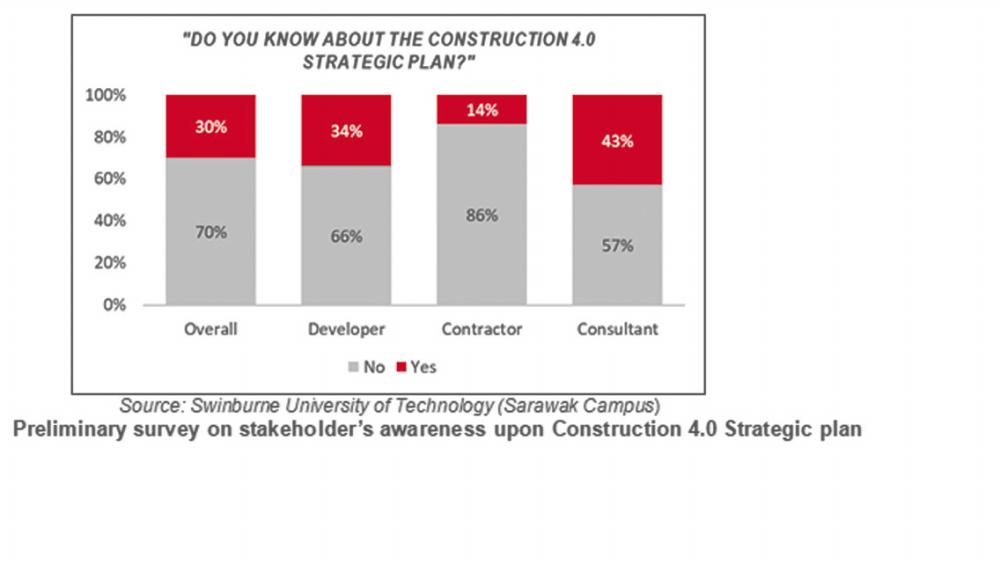THE emergence of the Fourth Industrial Revolution (IR4.0) has created a paradigm shift that shaped industrial sectors towards digital transformation. To be aligned with this transformation, the Construction 4.0 Strategic Plan (2021–2025) was formulated and to be functioned as a roadmap for the Malaysian construction industry to embrace IR4.0 in ways that would transform its productivity and competitiveness. The plan is divided into four thrusts, covering 12 emerging technologies and its implementation plan within the short, medium, and the long term.
Though the plan has been released since 2020, awareness about it is rather low among industry players. A preliminary survey conducted by Swinburne University of Technology (Sarawak Campus) at Malaysia’s southern region in July 2022 found that as high as 70% of the industry players – developers (66%), contractors (86%), consultants (57%) – are not aware of the existence of the plan (see chart).
To the developers (referring to the survey respondents), the plan should not just create ideas and inform visions of how one can imagine the future of construction industry. It should be a more tactical plan for “what to do” and “how to get there”; especially on how organisations with different scale can fit in to the plan, but are still being able to respond to the changing marketplace on a daily basis. Also, the plan must be put in the right mindset, whereby business transformation should not be done just for the sake of implementing technology, but to be framed as a high-level plan that can drive greater business value and customers’ satisfaction through digital transformation initiatives.
Meanwhile, the contractors (referring to the survey respondents) opined that the plan missteps in scoping the time and resources that are needed to deliver a successful outcome. Pragmatism is a key part of any successful plan; and failure to account for business as usual could influence the buy-in from stakeholders, thereby affecting the effectiveness of its implementation.
From the professionals’ point of view (referring to the survey respondents), all organisations have a limited capacity for change, especially under the current economic environment where most of them are under constant pressure to cut cost and save money. Risks and challenges will have to be faced before true change begins.
There are many problems and issues in the industry, which can be solved by simply “changing the way of doing things”, without even involves a drastic change through technology transformation. “Being practical” and “meeting the industry players’ needs” are the key towards a higher level of efficiency and a modern construction industry.
This article is contributed by MKH Bhd manager of product research & development Dr Foo Chee Hung and Swinburne University of Technology Sarawak Campus Faculty of Engineering, Computing & Science course director & senior lecturer Dr Chai Chang Saar.










